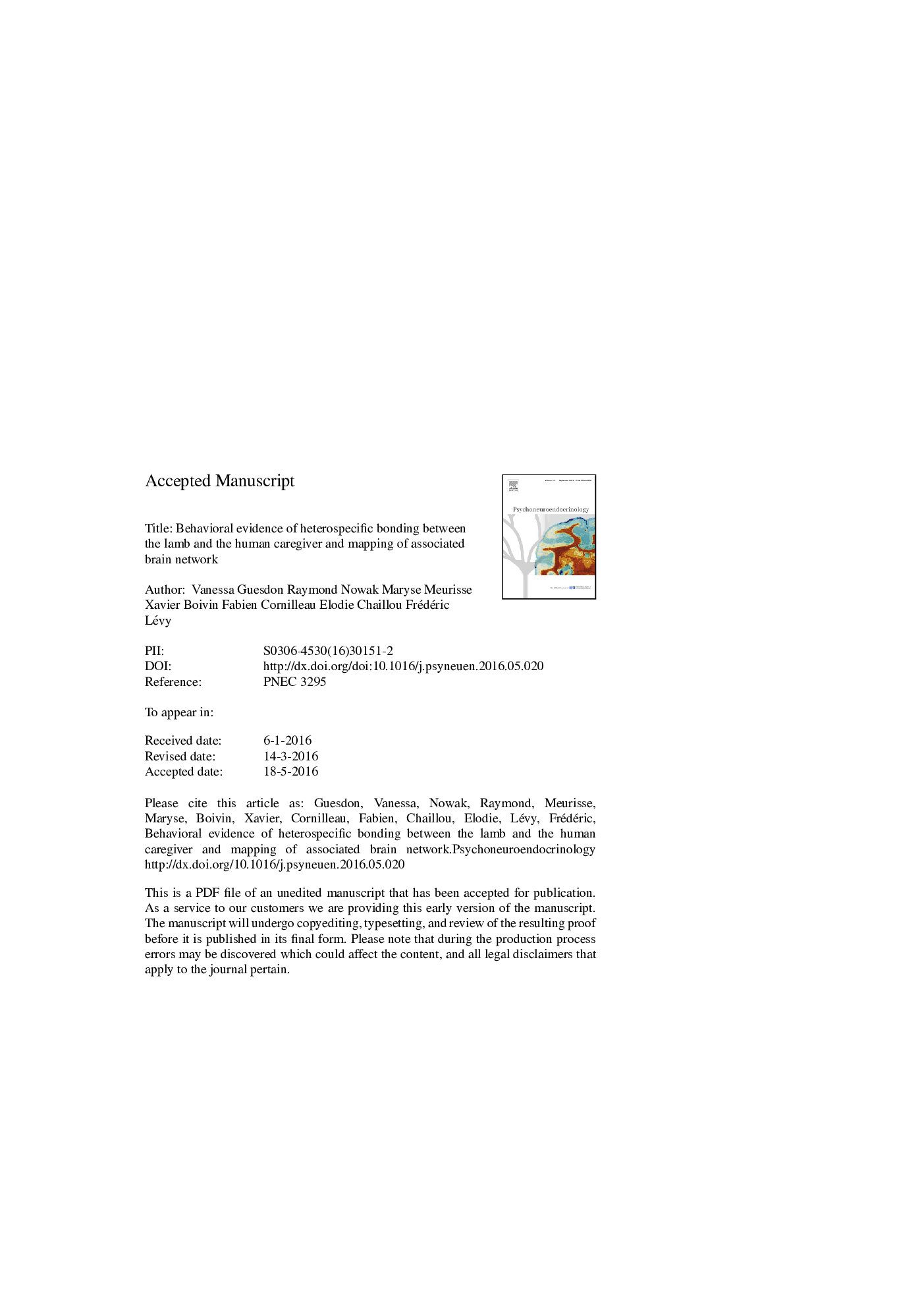| Article ID | Journal | Published Year | Pages | File Type |
|---|---|---|---|---|
| 6818019 | Psychoneuroendocrinology | 2016 | 40 Pages |
Abstract
While behavioral mechanisms of bonding between young mammals and humans have been explored, brain structures involved in the establishment of such processes are still unknown. The aim of the study was to identify brain regions activated by the presence of the caregiver. Since human positive interaction plays an important role in the bonding process, activation of specific brain structures by stroking was also examined. Twenty-four female lambs reared in groups of three were fed and stroked daily by a female caregiver between birth and 5-7 weeks of age. At 4 weeks, an isolation-reunion-separation test and a choice test revealed that lambs developed a strong bond with their caregiver. At 5-7 weeks of age, lambs were socially isolated for 90Â min. They either remained isolated or met their caregiver who stroked them, or not, at regular intervals over a 90-min period. Neuronal activation was investigated at the end of the period for maximum c-Fos expression. Reunion with the caregiver appeased similarly the lambs whether stroking was provided or not. Stroking did not activate a specific brain network compared to no stroking. In both cases, brain regions associated with olfactory, visual and tactile cue processing were activated in the presence of the caregiver, suggesting a multisensory process involved. In addition, activation of the oxytocinergic system in the hypothalamic paraventricular nucleus induced by the presence of the caregiver suggests similar neuroendocrine mechanisms involved in inter-conspecific and animal-human bonding.
Related Topics
Life Sciences
Biochemistry, Genetics and Molecular Biology
Endocrinology
Authors
Vanessa Guesdon, Raymond Nowak, Maryse Meurisse, Xavier Boivin, Fabien Cornilleau, Elodie Chaillou, Frédéric Lévy,
